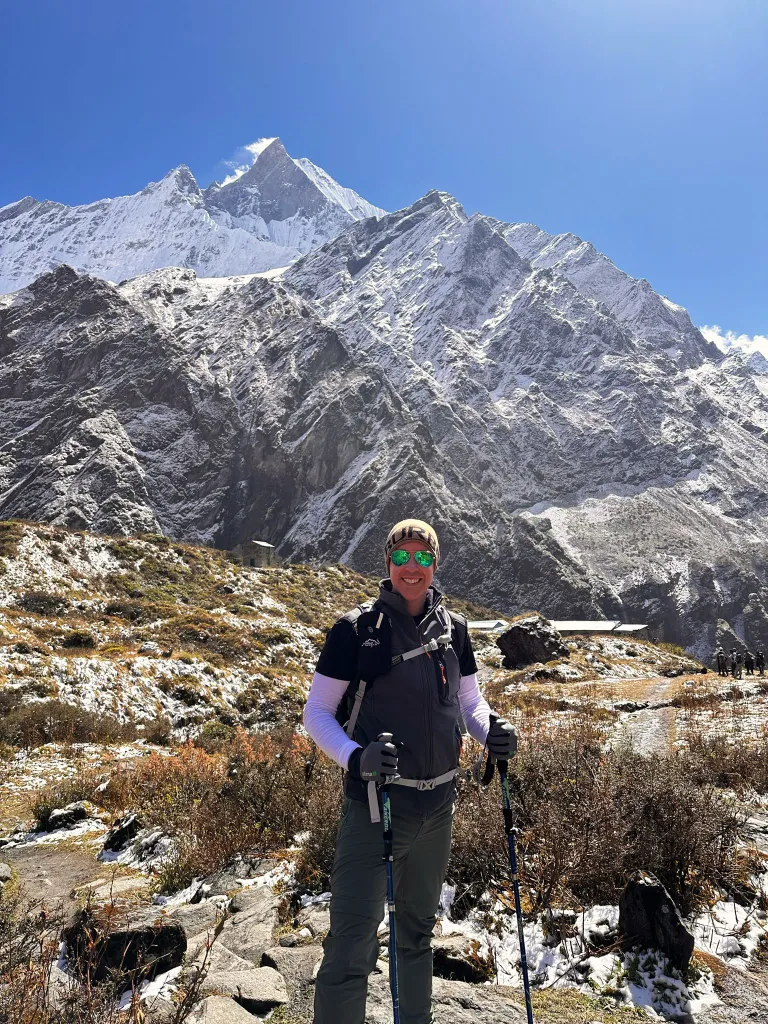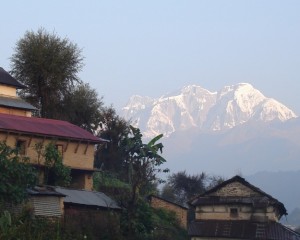Is Island Peak Climibing Worth It?
You want to try peak climbing in the Everest region. But for a beginner or even an experienced climber, Mt Everest, well, a beginner and experienced trekker might have some good news, as they can fulfill their wish of peak climbing within 16-20 days thanks to Island Peak Climbing.
Island Peak, also called the Imja Tse, is 6189 m high. It is located in the heart of Sagarmatha National Park and attracts both new and experienced climbers who want to start with high altitude peak climbing.
The fun fact is that legendary climbers Sir Edmund Hillary and Tenzing Norgay Sherpa practiced climbing on Island Peak before heading toward Everest.
But does all this reason make the Island Peak Climbing worth it? Buckle up as we are going out for a short drive to find all the aspects that make Island Peak Climbing wonderful.

Overview and Highlights Of Island Peak
The name Island Peak justifies the majestic appearance of the island in a sea of ice surrounded by other appealing peaks like Lhotse, Nuptse, and Barutnse.
Island Peak is famous for its easy access to climbing and the rewards of breathtaking peaks like Ama Dablam, Lhotse, Everest, Makalu, Nutpse, Cho Oyu, Baruntse, and the list goes on.
The Island Peak Climbing route starts from the short scenic flight of Lukla and then heads toward Namche Bazar. The trail is a combination of the Everest base Camp trek, so you get a perspective of traditional Sherpa people and their customs and traditions. Besides, as you pass through the spinning praying wheel, different monasteries, and flying chorten, you are taken by the beauty of Tibetan culture and customs.
As you reach the Chukung Valley, your journey to the Island Peak Base Camp(5100m) begins. Here, your guide will brief you on the route. The 10th day marks your time to climb and take up the challenge of the Island Peak. According to the Nepal Mountering Association, the island peak is classified as a Group B trekking peak.
The trekking peak means there are slight technical challenges in your climb. During your climbing journey, you will feel a sense of adrenaline and thrill. Besides, the technical climb rewards you with different things during the Island Peak Climbing.
Highlight of Island Peak Climbing
- The first reward you encounter is the friendly local Sherpa people and their culture. The cultural artefacts along the trail will take you deep into their beauty.
- Further walking the trail, you can encounter some of the endangered species, such as the Himalayan Thar, snow leopard, and a diverse range of plants and animals in the Sgaramtah National Park.
- Alongside, you get a fantastic chance to encounter the cheerful smiles of the majestic white peak like Ama Dablam, Cho Oyu, Mera, Lhotse
- Since it is a trekking peak, there are fewer technical climbs. The climbers with a good level of physical fitness and some prior experience and support of proper climbing gear

How difficult is the Island Peak to climb?
Despite being a trekking peak and having a less technical Climb, it presents a moderate challenge for climbers, and basic mountaineering skills might be required.
After ten days of trekking, the day comes for climbing. While trekking itself presents a physical challenge, then you head to the high base camp of the Island Peak from the low base camp, which is 5100m to 5600m, before you reach the final summit.
Furthermore, the final scene is challenging, as you have to deal with a steep incline of 70-80 degrees and pass crevasses using fixed ropes. Depending on your fitness level and condition, the entire summit takes 7-9 hours.
- Since the peak is 6189m altitude, sickness can be a concern. You need to have better acclimatization in Chukung Valley to help your body adjust to the altitude. But in case of any emergency, you should get the medical help.
- Conquering the peak, even for a beginner, requires good physical fitness. This means you have to get involved in training before the ascent to prepare for the physical challenges of the steep ascent and long hiking.
- Although basic mountaineering skills are enough, it would be a great help if you had knowledge of climbing techniques and support of the proper gear.

What is the success rate of the Island Peak?
Apart from the moderate challenges of Island Peak Climbing, the success rate of the peak is almost 85-90%. The impressive rate comes from proper planning, an experienced local guide, and effective acciliazation strategies. The peak is a popular choice to introduce you to high-altitude mountaineering and is used as a training ground for those who wish to do so.
To have successful plans and excursions, it is better to hire a professional tour operator with a good number of reviews on Google, like Nepal Vision Trek.
Which season is best for Island Peak?

It is quite popular among trekkers and climbers that spring and autumn are among the best seasons to embark on trekking and climbing. Each season has its own charm and highlights, but spring and autumn stand out the most.
Spring
As you bid farewell to the cold and hard weather, nature gains its authentic charm and highlights its beauty. Apart from that, all the animals are active during the season, and you have a high chance of encountering them.
At the same time, the comfortable weather and clear skies allow you to enjoy the cheering smiles of the surrounding Everest, Nutpse, and many more peaks.
The time is also the festival period for the Sherpa people as they celebrate Dumje and many more. It gives you a cultural perspective of the people living there. But the end of the season welcomes rainfall, so get an update on the weather beforehand.
Autumn
The lively atmosphere, the clear views of the majestic peak, and the warm weather make autumn the best weather to visit trekking and climbing.
Despite that, the season is known for the time of the natural charm and cultural wonders. There is natural charm because the landscape regains its beauty after heavy rainfall, and cultural charm because festivals like Kumje and many more are celebrated at this time.
However, as compared to spring, autumn is the second favourite among climbers for initiating peak climbing. Yet the season is quite a peak time. So it is better for you to book in advance to tackle the crowd.
To wrap up, Island Peak Climbing is a blend of physical challenge, technical mountaineering, and appealing natural beauty. The clib is acesisble for beginners. Yet it demands a walk on steep inclines, glaciers, and high altitudes. The rewarding views of Everest, Lhotse, Cho Oyu, and Mera Peak make the effort worthwhile.
The best part of your journey passes through Sherpa villages, which add an extra cultural aspect to the experience. Besides, if you want Island Peak Climbing's expertise and guidance, feel free to contact Nepal Vision Trek.






